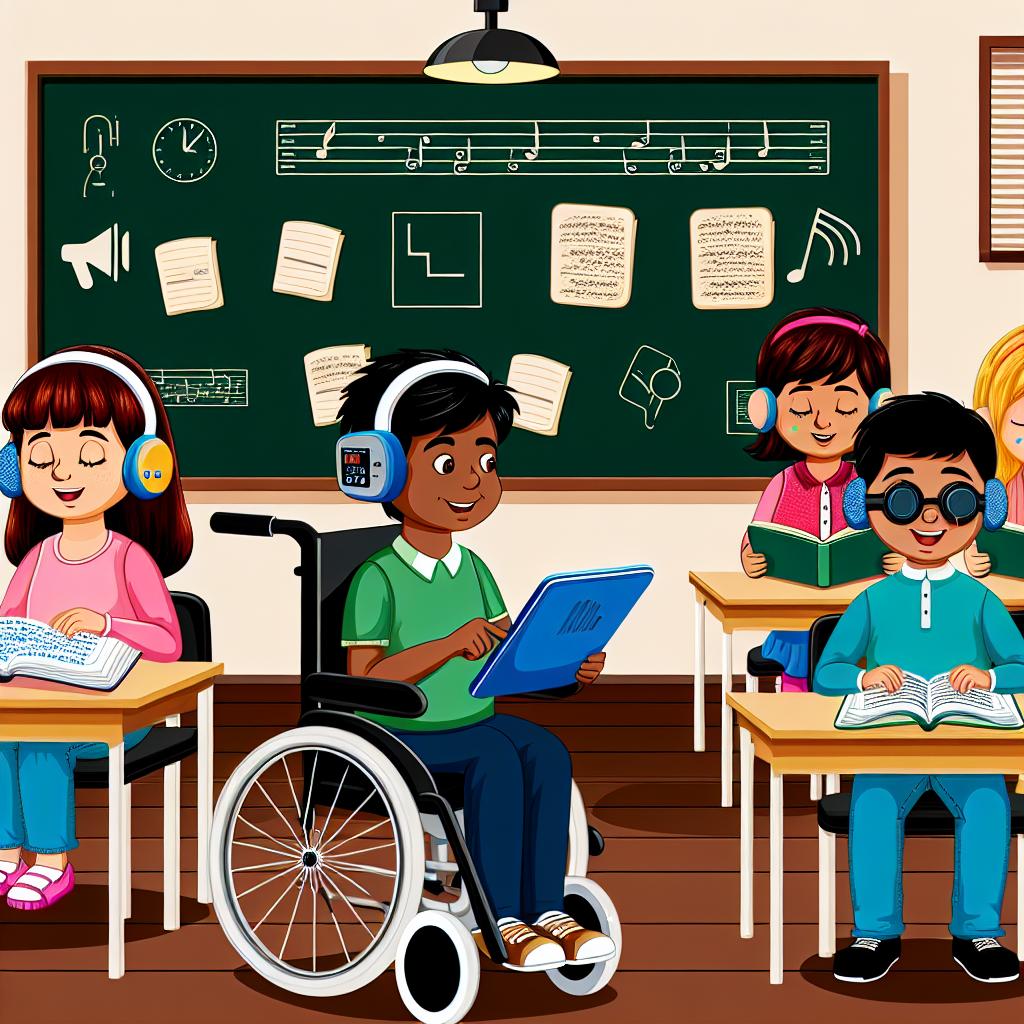Introduction to Assistive Technology in Education
Assistive technology refers to devices or software designed to aid individuals with disabilities in achieving greater independence. In the educational context, these technologies play a crucial role by facilitating learning and enhancing the educational experience for students with diverse needs. With a focus on accessibility, these tools are significant in fostering an inclusive environment where every student can thrive and make substantial academic progress.
Types of Assistive Technologies in Education
There is a wide range of assistive technologies available to support students in the classroom. These can be broadly categorized as follows:
Adaptive Learning Tools
Adaptive learning tools are designed to provide personalized educational experiences. They adjust the level of difficulty based on a student’s performance, ensuring an optimal learning trajectory. Examples include software that adapts reading material complexity or offers alternative pathways in educational exercises. By tailoring the learning materials to the student’s unique needs, adaptive tools facilitate a customized experience that supports effective knowledge retention and skill acquisition.
Communication Devices
Students with communication challenges can benefit greatly from communication devices. Technologies like augmentative and alternative communication (AAC) devices use symbols or text to speech to facilitate effective interaction. These are essential for students who struggle with verbal communication, allowing them to express their thoughts and participate in classroom discussions. For more information on AAC technologies, you can explore resources from AAC Funding, which provide insights into available options and funding opportunities.
Text-to-Speech and Speech-to-Text Applications
Text-to-speech (TTS) applications convert written text into spoken words. They are beneficial for students who have difficultly reading text, providing auditory access to written content. Conversely, speech-to-text applications transcribe spoken words into text, aiding those who have difficulty with writing. These applications are widely integrated into modern operating systems and software platforms, enhancing educational access for students with varying needs. By bridging the gap between reading and writing capabilities, these tools support comprehensive educational engagement.
Benefits of Assistive Technology in Education
The primary benefit of assistive technology in education is that it provides equal learning opportunities for students with disabilities or learning difficulties. Here are a few key advantages:
Enhanced Accessibility
Assistive technologies ensure that all students can access the learning resources they need. This increased accessibility leads to a more inclusive educational environment. Regardless of their challenges, students are provided the means to participate fully in classroom activities, gaining the educational benefits available to their peers.
Improved Academic Performance
By catering to individual learning styles and needs, assistive technologies enable students to engage with educational content more effectively, potentially improving their academic performance. When the tools align with personalized learning plans, they support students in achieving specific educational objectives, ultimately reflecting in better grades and a deeper understanding of the material covered.
Fostering Independence
These technologies empower students to perform tasks on their own, fostering a sense of independence and boosting their confidence in the educational setting. By allowing students to work autonomously, the technology nurtures self-reliance, which is crucial for their personal development and academic growth.
Challenges and Considerations
While assistive technology offers numerous benefits, there are also challenges and considerations to be aware of:
Cost and Funding
Acquiring assistive technology can be expensive. Schools and families might need to seek dedicated funding or grants. Organizations such as The U.S. Department of Education often provide resources and support for funding needs. Navigating these resources can be complex, requiring collaboration among educators, parents, and students to identify and secure appropriate financial supports.
Training and Implementation
Successful integration of assistive technology requires adequate training for both educators and students. This ensures the technology is effectively used to meet educational goals. Without proper training, the potential benefits of these tools could be underutilized, resulting in missed opportunities for students who would otherwise benefit significantly from their application.
Future Prospects
The future of assistive technology in education appears promising, with continuous advancements tailored to evolving educational needs. Emerging technologies, such as artificial intelligence and machine learning, are beginning to influence how assistive technologies are developed and implemented in the educational sphere.
Artificial Intelligence and Customization
Artificial Intelligence (AI) promises further customization of learning tools, offering deeper insights into student progress and the specific areas where additional assistance may be necessary. AI-driven applications can analyze performance metrics and adapt learning materials in real time, providing an even more personalized educational experience.
Remote Learning and Assistive Technology
As remote learning becomes increasingly prevalent, assistive technologies are adapting to meet the needs of students in virtual environments. Video conferencing tools with real-time transcription capabilities and online platforms optimized for accessibility are paving the way for inclusive remote education, ensuring students with disabilities are not left behind.
Collaboration between Developers and Educators
The collaboration between technology developers and educators is crucial for creating effective assistive technologies. By working together, they can ensure that the tools designed are practical, user-friendly, and directly beneficial in the classroom setting. Such collaborations help bridge the gap between technological possibilities and educational realities, optimizing the impact of these tools on student outcomes.
Conclusion
Assistive technology remains a vital component in facilitating inclusive education. By addressing the unique needs of individual students, these technologies pave the way for a more accessible and personalized learning experience. As technology continues to evolve, its role in education will likely expand, further leveling the playing field for all learners. In fostering greater independence, enhancing accessibility, and improving academic performance, assistive technologies stand as a cornerstone of modern educational systems that prioritize inclusivity and equal opportunities for every student.
